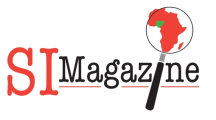A new document tagged ‘Situation at a glance’ on Meningitis in Nigeria, released yesterday, by World Health Organisation (WHO), showed that from October 1, 2022 to April 16, 2023, a total of 1,686 suspected cases, 532 confirmed cases and 124 deaths, with a Case Fatality Ratio (CFR) of seven per cent were reported from 81 councils (LGAs) in 22 out of the 36 states, including the Federal Capital Territory (FCT.
CFR measures severity of disease by defining the total number of deaths as a proportion of reported cases at a specific time.
According to the report, males account for 57 per cent of total suspected cases.
“The highest proportion of reported cases is among children aged one to 15 years. Jigawa State accounts for 74 per cent of all suspected cases, and this state borders the Zinder region in Niger, where a meningitis outbreak has been reported since October 2022,” it noted.
WHO said 481 cerebrospinal fluid samples were collected from patients in 18 states. Out of the samples, 247 tested positive for bacterial infection by PCR test. Among the positive cases, 226 (91 per cent) were caused by Neisseria meningitidis serogroup C (NmC), while 13 cases (5.4 per cent) were caused by Streptococcus pneumoniae, and only one case (0.4 per cent) by Haemophilus influenzae. For 232 samples, the result was negative, with two others pending.
In the last five weeks alone (epidemiological weeks 11-15), 41 out of 140 samples tested (29 per cent) were positive for NmC. The confirmed cases were reported from eight states, including Jigawa (231), Zamfara (six), Yobe (five), Benue (one), Gombe (one), Katsina (one), Oyo (one) and Sokoto (one).
According to the global health agency, of Jigawa’s 27 LGAs, 25 have reported at least one suspected case. There have been 66 deaths in the state. During the current outbreak, Maigatari LGA and Sule-tankarkar LGA have both crossed the epidemic threshold of 10 suspected cases per 100,000 population and account for 60 per cent of the total reported cases, with 505 and 247 cases respectively.
The CFR for the outbreak is seven per cent and five per cent at the national and Jigawa levels respectively.
WHO said the extended meningitis belt of Sub-Saharan Africa, stretching from Senegal in the west to Ethiopia in the east (26 countries) and including the northern part of Nigeria, have the highest disease rates.
Meningitis in these nations follows a seasonal pattern, being most common during the dry season (December through June), with a peak between March and April, when there is persistent low air humidity and high dust loads that are believed to damage the pharyngeal mucosa and ease the colonisation of the nasopharyngeal epithelium by the meningococci. Seasonal epidemics vary in size from year to year.
Lassa fever is endemic in Nigeria and the yearly peak of cases is typically observed during the dry season (December to April).
Meningococcal meningitis is transmitted from person to person through droplets of respiratory and throat secretions, usually by asymptomatic carriers. Close, prolonged contact with an infected person, or living with a carrier, facilitates the spread of the disease. The average incubation period is four days but can range between two and 10 days.
Nigeria Centre for Disease Control (NCDC) listed the major challenges in controlling CSM to include: difficulty in accessing some communities due to security concerns (that is, Zamfara); inadequately trained personnel in states for case management (that is, LP procedures); poor and inconsistent reporting from states; poor health seeking behaviour due to (difficult terrain, high cost of transportation to treatment centres and poor personal and community hygiene promotion.”
Response measures implemented during an outbreak, including improved case finding and management, as well as mass vaccination campaigns contribute to control.
WHO said meningococcal meningitis remains a public health concern in Nigeria, with outbreaks reported in recent years.
With support from WHO, NCDC is implementing response measures at the national level. These include vaccination, surveillance, active case finding, sample testing and case management.
According to the global organisation’s risk assessment, Nigeria has implemented interventions to combat meningitis, including introducing the meningococcal A (MenA) conjugate vaccine against NmA from 2011-2022.
“Through preventive campaigns, Nigeria has vaccinated over 100 million people aged one to 29 years, and the vaccine has been included in the country’s routine immunisation schedule since 2019,” it added.
WHO noted that insecurity, particularly in Northeast, affects vaccination coverage, especially in areas controlled by non-state armed groups. It said at the national level, immunisation coverage remains suboptimal at 50 per cent as of 2021.
Licensed vaccines against meningococcal, pneumococcal and Haemophilus influenzae diseases have been available for many years. These bacteria have several strains (known as serotypes or serogroups), and vaccines are designed to protect against the most harmful strains. Over time, there have been major improvements in strain coverage and vaccine availability, but no universal vaccine against these infections exists.
Additionally, in November 2022, an outbreak of meningitis was confirmed in the Zinder region of Niger. This region borders Jigawa, which is the worst affected state in Nigeria. The risk of cross-border transmission is high due to the population movement across the border.
The WHO advice: “Preventing meningitis through vaccination is the most effective way to reduce the burden and impact of the disease by delivering long-lasting protection. The anticipated rollout of multivalent meningococcal conjugate vaccines is a public health priority to eliminate bacterial meningitis epidemics in the African meningitis belt.
“Early diagnosis and treatment are critical in managing all types of meningococcal disease. Appropriate case management, active community-based case finding, and reactive mass vaccination of affected populations are necessary in response to epidemics. Currently, there is an ongoing reactive vaccination campaign. To guide further response activities, it is crucial to monitor the spread of the disease to new areas, including considering further vaccine requests if appropriate. Timeliness of the reactive campaign is essential, with the goal being to initiate it within four weeks of crossing the epidemic threshold.
“WHO does not recommend any restriction on travel and trade to Nigeria based on the currently available information.”
Also, latest figures on Lassa fever from NCDC showed that cumulatively from week one to week 15 in 2023, there were 4702 suspected cases, 877 confirmed cases and 152 deaths in 101 LGAs in 26 states, with a CFR of 17.3 per cent, which is lower than the CFR for the same period in 2022 (19.0 per cent).
According to the “Lassa fever Situation Report: Epi Week 15: 10th April – 16th April 2023”, in total for 2023, 26 States have recorded at least one confirmed case across 101 LGAs. “Seventy-two per cent of all confirmed Lassa fever cases were reported from these three states (Ondo, Edo, and Bauchi) while 28 per cent were reported from 23 states with confirmed. Of the 72 per cent confirmed cases, Ondo reported 32 per cent, Edo 29 per cent, and Bauchi 11 per cent.
The predominant age group affected is 21-30 years (Range: 1 to 93 years, Median Age: 32 years). The male-to-female ratio for confirmed cases is 1:0.9.
“The number of suspected cases increased compared to that reported for the same period in 2022. No new Healthcare worker was affected in the reporting week 15. National Lassa fever multi-partner, multi-sectoral Emergency Operations Centre (EOC) activated to coordinate the response activities at all levels,” it noted.
Also, according to the NCDC’s “Cholera Situation Report- Cumulative Epi-Summary Epi Week: 13 2023”, as of April 2, 2023, a total of 1336 suspected cases including 79 deaths (CFR 5.9 per cent) have been reported from 12 states. “Of the suspected cases since the beginning of the year, age groups 15-24 and greater than 45 years is the most affected age groups for males and females respectively.
Of all suspected cases, 53 per cent are males and 47 per cent are females. Six states – Cross River (647 cases), Ebonyi (97 cases), Abia (72 cases), Niger (38 cases), and Zamfara (28 cases) account for 96 per cent of all cumulative cases,” it observed.




